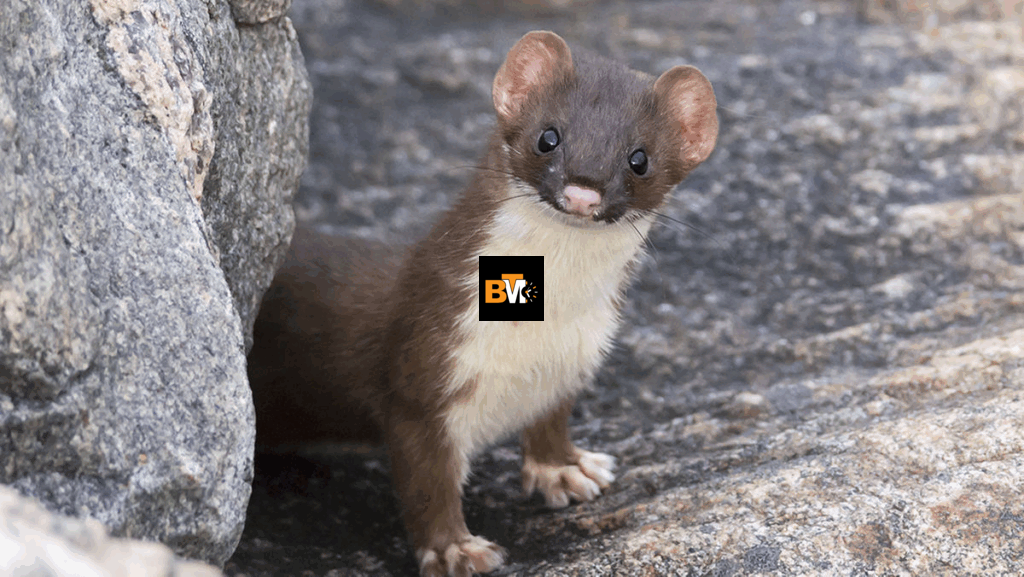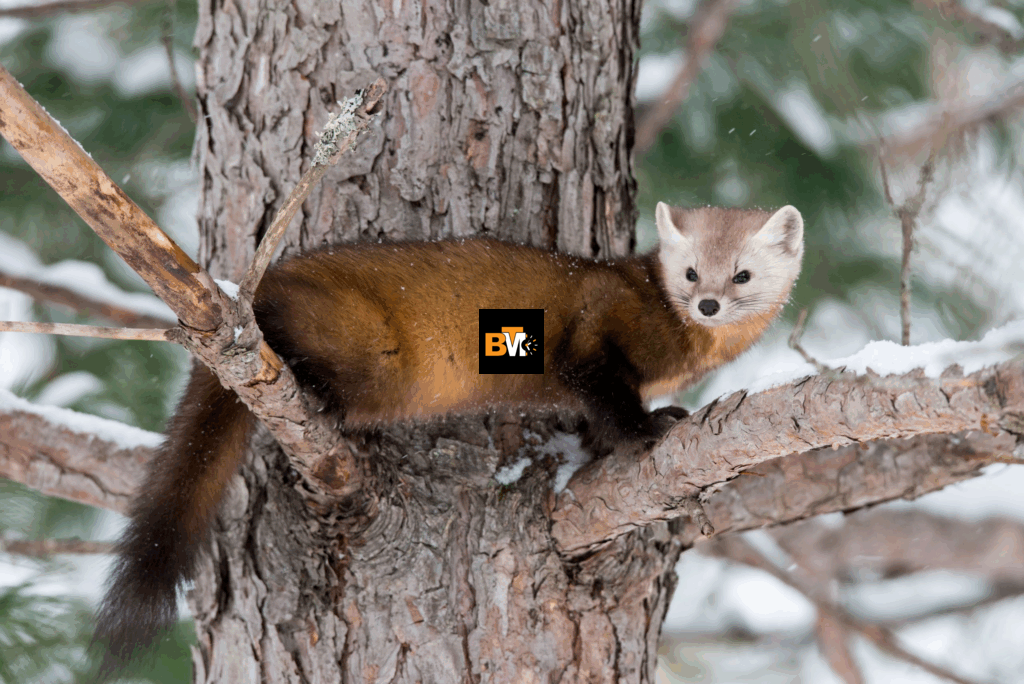Weasels in Indiana are small, sneaky hunters that often go unseen, but they play a big role in the ecosystem. These fast, furry creatures are found in different parts of the state and are known for their unique habits. From their changing coats in winter to their fierce hunting skills, there’s a lot to learn about weasels in Indiana.
What Is a Weasel?
Weasels are small mammals with long, slender bodies, short legs, and sharp teeth. They belong to the Mustelidae family, which also includes animals like otters, badgers, and ferrets. Weasels are expert hunters and are known for their quick movements and bold nature, even though they’re small in size.
In Indiana, when people talk about weasels, they’re usually referring to the long-tailed weasel, the most common type found in the state. These animals may look cute, but they’re fierce predators in the wild. With sharp senses and lightning-fast reflexes, weasels are perfectly adapted for life in Indiana’s fields, forests, and farms.
Where Do Weasels Live in Indiana?
Weasels can be found all across Indiana, from the wooded areas of Brown County to the open farmlands of the north. They are very adaptable animals and can live in a variety of environments, including:
- Wooded areas
- Grasslands
- Riverbanks
- Farmlands
- Abandoned buildings or barns
They usually build nests in hollow logs, rock piles, or abandoned burrows made by other animals like groundhogs. Sometimes, they even nest under buildings or old tree roots. Since they’re nocturnal and very secretive, you might not spot one easily—but they’re out there.
If you’re walking near fields or forests at dawn or dusk in Indiana, keep your eyes peeled. Weasels tend to stick close to areas where prey like mice and rabbits are plentiful.
What Do Weasels Eat?
Weasels are carnivores, which means they eat meat. Despite their small size, weasels are brave and fierce hunters that don’t hesitate to take on animals their own size or even larger.

They rely on their sharp teeth, strong jaws, and fast movements to catch prey. A single weasel can eat up to 40% of its body weight each day, so they’re always on the move looking for food.
Mice and Rats
Mice and rats are some of the weasel’s favorite meals. In Indiana’s rural and suburban areas, these rodents are easy to find. Weasels often sneak into barns, sheds, and woodpiles where mice nest. By keeping the rodent population down, weasels help protect crops and stored food, which makes them surprisingly helpful to farmers.
Birds and Eggs
Weasels are great climbers, and they’re not afraid to climb trees or sneak into bird nests. They may eat small birds, chicks, and eggs if they find them. This might not make them popular with bird lovers, but it’s just part of nature.
Insects and Frogs
When rodents are harder to find, weasels also eat insects, frogs, lizards, and even snakes. In Indiana’s warmer months, frogs and insects are more active, giving weasels more food options. Their ability to adapt their diet helps them survive in different seasons and habitats.
When Are Weasels Active?
Weasels are usually nocturnal, meaning they’re most active at night. However, they can also be seen hunting during early morning or late evening hours, especially in the spring and fall. These animals do not hibernate, so you may even spot them in the winter as long as food is available.
In Indiana’s colder months, the long-tailed weasel changes its coat from brown to white to blend in with snow. This helps them stay hidden from predators and sneak up on prey more easily. Since they’re always on the move, weasels are very hard to track—even in the snow.
Are Weasels Dangerous?
Weasels are not dangerous to humans. In fact, they are shy and avoid people whenever they can. They might hiss or bite if they feel cornered, but they don’t pose a threat to adults or kids.
However, if you own chickens or rabbits, a weasel might try to get into the coop or hutch. They are small enough to squeeze through tiny holes and are known for being clever hunters. That’s why farmers and pet owners sometimes see them as pests.
Still, weasels play an important role in controlling rodents and small animal populations, which helps balance Indiana’s ecosystem.
Kinds of Weasels in Indiana
There is mainly one kind of weasel found in Indiana, but it has some interesting features that change with the seasons.

Long-Tailed Weasel
The long-tailed weasel (Neogale frenata) is the most common species in Indiana. It has a brown coat with a yellowish belly in the warmer months. The tip of its long tail is always black, which helps you identify it. This weasel is fast, agile, and fearless. It prefers areas with plenty of cover, like brushy fields, wooded edges, and grassy meadows.
It’s about 11 to 22 inches long, including the tail, and weighs less than one pound. Don’t let its size fool you—it can take down prey nearly as big as itself.
Winter Changes
In winter, the long-tailed weasel’s fur turns completely white, except for the black tip of the tail. This seasonal camouflage helps it blend into snowy environments. The change is triggered by the shortening of daylight, not temperature. So even if there’s no snow on the ground, a weasel in Indiana might still turn white by winter.
Can You Keep a Weasel as a Pet?
While weasels may look cute, they are wild animals and are not suitable as pets. In Indiana and many other states, it’s illegal to keep a wild weasel without a special permit. They are not domesticated and can become aggressive or destructive when kept in homes.
If you like the idea of a pet weasel, consider a ferret, which is a domesticated member of the same family. Ferrets are legal in many places and are bred to live with people, unlike their wild cousins.
Fun Weasel Facts for Kids
- A weasel can squeeze through a hole the size of a quarter!
- Their heart beats super fast—up to 400 times per minute.
- Long-tailed weasels turn white in the winter and brown in the summer.
- They are excellent climbers and swimmers.
- Weasels can run backwards just as fast as they run forward!
- A group of weasels is called a “boogle” or a “gang.”
- Even though they are small, they have sharp teeth and strong jaws.
- Weasels have been around for millions of years and live all over the world.
- In Native American culture, weasels are often seen as symbols of stealth and cleverness.
- They help control rodent populations naturally, making them farmers’ quiet helpers.
The Bottom Line
Weasels in Indiana are fascinating little predators that play an important role in the local ecosystem. From farmland to forests, these small mammals are constantly hunting for food and helping keep rodent populations in check. Although they’re not often seen, they’re all around us—hidden under logs, darting through tall grass, or even changing colors with the seasons.
Whether you’re a nature lover, a curious kid, or a farmer wondering about strange nighttime visitors, weasels are worth learning about. Just remember, they’re wild animals—so it’s best to admire them from a distance.







Leave a Reply